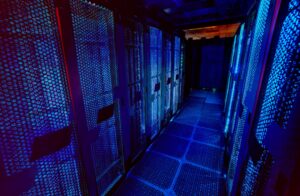Thermal cameras have transformed home inspections by revealing hidden issues that traditional methods often miss. These devices detect temperature differences on surfaces, helping inspectors find problems like water leaks, insulation gaps, air leaks, and electrical faults quickly and non-invasively. Here’s a detailed guide on how to use thermal cameras effectively for home inspections.
Understanding Thermal Cameras in Home Inspections
Thermal cameras capture infrared radiation emitted by objects and convert it into visible images showing temperature variations. Warm areas appear in colors like red or white, while cooler areas show as blue or yellow. Since water and moisture absorb heat differently, they show up as cooler spots, making thermal imaging ideal for detecting leaks and dampness. Electrical issues often appear as hot spots due to overheating components.
Step-by-Step Thermal Camera Use for Home Inspections
1. Preparation
- Start with a visible inspection to note any obvious defects.
- Record indoor and outdoor temperatures, humidity, weather, wind speed, and direction.
- Ensure a temperature difference of at least 18°F (10°C) between inside and outside for accurate thermal imaging.
- Turn off HVAC systems if checking for air leaks to avoid false readings, or turn them on if assessing heating/cooling performance.
2. Exterior Inspection
- Scan walls, roof, foundation, windows, and doors.
- Look for thermal anomalies indicating missing insulation, heat loss, or moisture intrusion.
- Use a blower door test if available to pressurize or depressurize the building, which helps reveal air leaks.
- Take note of environmental factors like sunlight, precipitation, and wind, as they affect thermal readings.
3. Interior Inspection
- Scan walls, ceilings, floors, electrical panels, and HVAC ducts.
- Identify cold spots that may indicate moisture or leaks.
- Detect hot spots in electrical components signaling potential fire hazards.
- Check for insulation gaps by spotting uneven temperature patterns.
- Use thermal imaging to detect air leaks around windows, doors, and vents, especially after changing indoor air pressure.
4. Analyze Thermal Images
- Review images for anomalies such as missing insulation, moisture, or electrical hot spots.
- Confirm suspicious areas with physical inspection if necessary.
- Create a thermal map of the property to identify patterns and recurring issues.
5. Reporting
- Present thermal images with clear explanations to clients.
- Highlight problem areas using visual evidence.
- Recommend repairs or further specialist inspections based on findings.
Common Uses of Thermal Cameras in Home Inspections
| Application | What to Look For | Benefits |
| Moisture Detection | Cool spots indicating leaks or damp areas | Prevent mold and structural damage |
| Insulation Inspection | Hot/cold spots showing gaps or damage | Improve energy efficiency |
| Air Leak Detection | Temperature differences around openings | Reduce energy loss |
| Electrical Inspection | Hot spots in panels or wiring | Identify fire hazards |
| HVAC System Check | Uneven temperature distribution | Optimize heating/cooling |
Tips for Effective Thermal Inspections
- Perform inspections during stable weather with sufficient temperature difference.
- Use blower door tests to enhance air leak detection.
- Combine thermal imaging with physical inspection for accurate diagnosis.
- Avoid direct sunlight, rain, or wind during inspections as these can distort thermal readings.
- Document all findings with clear thermal images and detailed notes.
Key Takeaways
- Thermal cameras reveal hidden home issues related to moisture, insulation, air leaks, and electrical faults.
- Accurate results depend on proper preparation, including environmental condition recording and temperature differences.
- Thermal imaging supports better repair decisions and energy-saving improvements.
- Combining thermal imaging with other inspection tools improves reliability and safety.
FAQs
Q: Can thermal cameras see through walls?
- No, they detect surface temperature differences that indicate underlying problems but cannot see through solid materials.
Q: When is the best time for a thermal inspection?
- When there is at least an 18°F (10°C) temperature difference between inside and outside, often early morning or late evening.
Q: Do I need training to use a thermal camera?
- Yes, interpreting thermal images accurately requires training and experience.
Q: Can thermal cameras detect electrical hazards?
- Yes, they identify hot spots in electrical panels and wiring that could lead to fires.
Thermal cameras make invisible home problems visible, enabling faster, safer, and more cost-effective inspections. Using them properly helps homeowners and buyers make informed decisions about repairs and energy efficiency upgrades.







